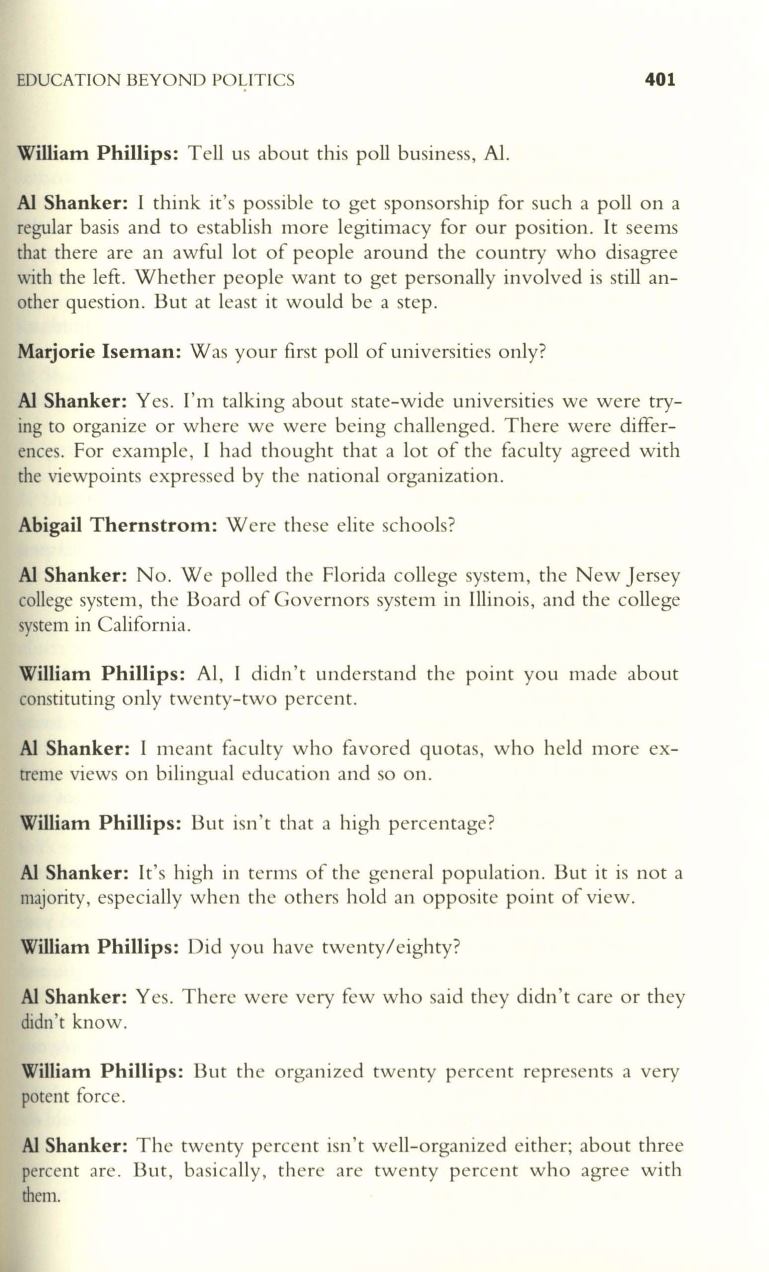
EDUCATION BEYOND POLITICS
401
William Phillips:
Tell us about this poll business, Al.
AI Shanker: I
think it's possible to get sponsorship for such a poll on a
regular basis and to establish more legitimacy for our position. It seems
that there are an awful lot of people around the country who disagree
with the left. Whether people want to get personally involved is still an–
other question. But at least it would be a step.
Marjorie Isetnan:
Was your first poll of universities only?
AI Shanker:
Yes. I'm talking about state-wide universities we were try–
ing to organize or where we were being challenged. There were differ–
ences. For example, I had thought that a lot of the facu lty agreed with
the viewpoints expressed by the national organization.
Abigail Thernstrotn:
Were these elite schools?
AI Shanker:
No. We polled the Florida college system, the New J ersey
college system, the Board of Governors system in Illinois, and the college
system in California.
William Phillips:
AI,
I didn't understand the point you made about
constituting only twenty-two percent.
AI Shanker: I
meant faculty who favored quotas, who held more ex–
treme views on bilingual education and so on.
William Phillips:
But isn't that a high percentage?
AI Shanker:
It's high in terms of the general population. But it is not a
majority, especially when the others hold an opposite point of view.
William Phillips:
D id you have twenty/eighty?
AI Shanker:
Yes. There were very few who said they didn't care or they
didn't know.
William Phillips:
But the organized twenty percent represents a very
potent force.
AI Shanker:
The twenty percent isn't well-organized either; about three
percent are. But, basicall y, there are twenty percent who agree with
them.


